Ignition and Combustion Characteristic of B·Mg Alloy Powders
Abstract
:1. Introduction
2. Materials and Methods
2.1. Materials and Instruments
2.2. Preparation of MgB2
2.3. Performance Test
3. Results
3.1. Preparation and Characterization of MgB2
3.2. Experimental Study of MgB2 Ignition Performance
3.3. Study of the Combustion Properties of MgB2
4. Conclusions
- The results show the maximum ignition temperatures of MgB2 obtained by the two methods are 1292 K and 1293 K, respectively.
- The calculation results of temperature change during MgB2 laser ignition were in good agreement with the experimental results, indicating that the calculation model is capable of describing the temperature change of the particle ignition process.
- The flame morphology and combustion state are close to the combustion with gaseous Mg in the initial stage. However, the subsequent combustion process is close to the combustion process of B. Compared with Mg and B, the MgB2 sample burns at a medium speed.
Author Contributions
Funding
Institutional Review Board Statement
Informed Consent Statement
Data Availability Statement
Conflicts of Interest
References
- Beckstead, M.W. Correlating aluminum burning times. Combust. Explos. Shock Waves 2005, 41, 533–546. [Google Scholar] [CrossRef]
- Berner, M.K.; Zarko, V.E.; Talawar, M.B. Nanoparticles of energetic materials: Synthesis and properties. Combust. Explos. Shock Waves 2013, 49, 625–647. [Google Scholar] [CrossRef]
- Pang, W.; Xue, Z.F.; Zhao, F.Q. Boron-Based Fuel Rich Solid Rocket Propellant Technolog; National Defense Industry Press: Beijing, China, 2016; pp. 19–21. [Google Scholar]
- Kim, S.; Lim, J.; Lee, S.; Jeong, J.; Yoon, W. Study on the ignition mechanism of Ni-coated aluminum particles in air. Combust. Flame 2018, 198, 24–39. [Google Scholar] [CrossRef]
- Zhu, B.; Li, F.; Sun, Y.; Wu, Y.; Shi, W.; Han, W.; Wang, Q.; Wang, Q. Enhancing ignition and combustion characteristics of micron-sized aluminum powder in steam by adding sodium fluoride. Combust. Flame 2019, 205, 68–79. [Google Scholar] [CrossRef]
- Feng, Y.; Xia, Z.; Huang, L.; Ma, L. Ignition and combustion of a single aluminum particle in hot gas flow. Combust. Flame 2018, 196, 35–44. [Google Scholar] [CrossRef]
- Glassman, I.; Williams, F.A.; Antaki, P. A physical and chemical interpretation of boron particles combustion. In Proceedings of the 20th Symposium (International) on Combustion, Pittsburgh, PA, USA, 12–17 August 1984. [Google Scholar]
- Chen, B.H.; Liu, J.Z.; Liang, D.L.; Zhou, Y.N.; Zhou, J.H. Research progress in coating mechanism and technology of boron particles. Chin. J. Explos. Propellants 2016, 39, 13–21. [Google Scholar]
- Shoshin, Y.L.; Mudryy, R.S.; Dreizin, E.L. Preparation and characterization of energetic Al-Mg mechanical alloy powders. Combust. Flame 2002, 128, 259–269. [Google Scholar] [CrossRef]
- Shtessel, E.; Dreizin, E. High Energy Metallic Mechanical Alloys for New Explosives and Incendiary Devices with Controllable Explosion Parameters, ADA397097; Exotherm Corporation: Camden, NJ, USA, 2001. [Google Scholar]
- Aly, Y.; Schoenitz, M.; Dreizin, E.L. Ignition and combustion of mechanically alloyed Al-Mg powders with customized particle sizes. Combust. Flame 2013, 160, 835–842. [Google Scholar] [CrossRef]
- Aly, Y.; Dreizin, E.L. Ignition and combustion of Al·Mg alloy powders prepared by different techniques. Combust. Flame 2015, 162, 1440–1447. [Google Scholar] [CrossRef]
- Whittaker, M.L.; Cutler, R.A. Effect of synthesis atmosphere, wetting, and compaction on the purity of AlB2. J. Solid State Chem. 2013, 207, 163–169. [Google Scholar] [CrossRef]
- Jia, Y.J. Status of Production Technology and Function mechanism of Al-Ti-B Alloy Products. Nonferrous Met. Process. 2017, 46, 33–34. [Google Scholar]
- Jalaly, M.; Gotor, F.J. A new combustion route for synthesis of TaB2 nanoparticles. Ceram. Int. 2018, 44, 1142–1146. [Google Scholar] [CrossRef]
- Guo, Y.; Zhang, W.; Zhou, X.; Bao, T. Magnesium Boride Sintered as High-energy Fuel. J. Therm. Anal. 2013, 113, 787–791. [Google Scholar] [CrossRef]
- Guo, Y. Study on Preparation, Combustion Property and Application of Modified Boron; National University of Defense Technology: Changsha, China, 2014. [Google Scholar]
- Birol, Y. Aluminothermic reduction of boron oxide for the manufacture of Al-B alloys. Mater. Chem. Phys. 2012, 136, 963–966. [Google Scholar] [CrossRef]
- Korchagin, M.A.; Dudina, D.V.; Bokhonov, B.B.; Bulina, N.V.; Ukhina, A.V.; Batraev, I.S. Synthesis of nickel boride by thermal explosion in ballmilled powder mixtures. J. Mater. Sci. 2018, 53, 13592–13599. [Google Scholar] [CrossRef]
- Shoshin, Y.L.; Trunov, M.A.; Zhu, X.; Schoenitz, M.; Dreizin, E.L. Ignition of aluminum-rich Al-Ti mechanical alloys in air. Combust. Flame 2006, 144, 688–697. [Google Scholar] [CrossRef]
- Badiola, C.; Gill, R.J.; Dreizin, E.L. Combustion characteristics of micron-sized aluminum particles in oxygenated environments. Combust. Flame 2011, 158, 2064–2070. [Google Scholar] [CrossRef]
- Gill, R.J.; Badiola, C.; Dreizin, E.L. Combustion times and emission profiles of micron-sized aluminum particles burning in different environments. Combust. Flame 2010, 157, 2015–2023. [Google Scholar] [CrossRef]
- Yu, B.; Du, C.Z. Study on the Temperature Determination Technique for Ignition and Combustion of Propellants. Chin. J. Explos. Propellants 2001, 24, 28–31. [Google Scholar]
- Qin, Z.; Paravan, C.; Colomobo, G.; Deluca, L.T.; Shen, R.Q.; Ye, Y.H. Ignition Temperature of Metal Fuel in Different Atmosphere. Initiat. Pyrotech. 2014, 4, 24–27. [Google Scholar]
- Yuan, C.M.; Li, C.; Li, G.; Zhang, P.H. Ignition temperature of magnesium powder clouds: A theoretical model. J. Hazard. Mater. 2012, 239–240, 294–301. [Google Scholar]
- Arkhipov, V.A.; Zhukov, A.S.; Kuznetsov, V.T.; Zolotorev, N.N.; Osipova, N.A.; Perfil’eva, K.G. Ignition and combustion of condensed systems with energy fillers. Combust. Explos. Shock Waves 2018, 54, 689–697. [Google Scholar] [CrossRef]
- Maček, A. Combustion of boron particles: Experiment and theory. In Proceedings of the 14th Symposium (International) on Combustion, University Park, PA, USA, 20–25 August 1972. [Google Scholar]
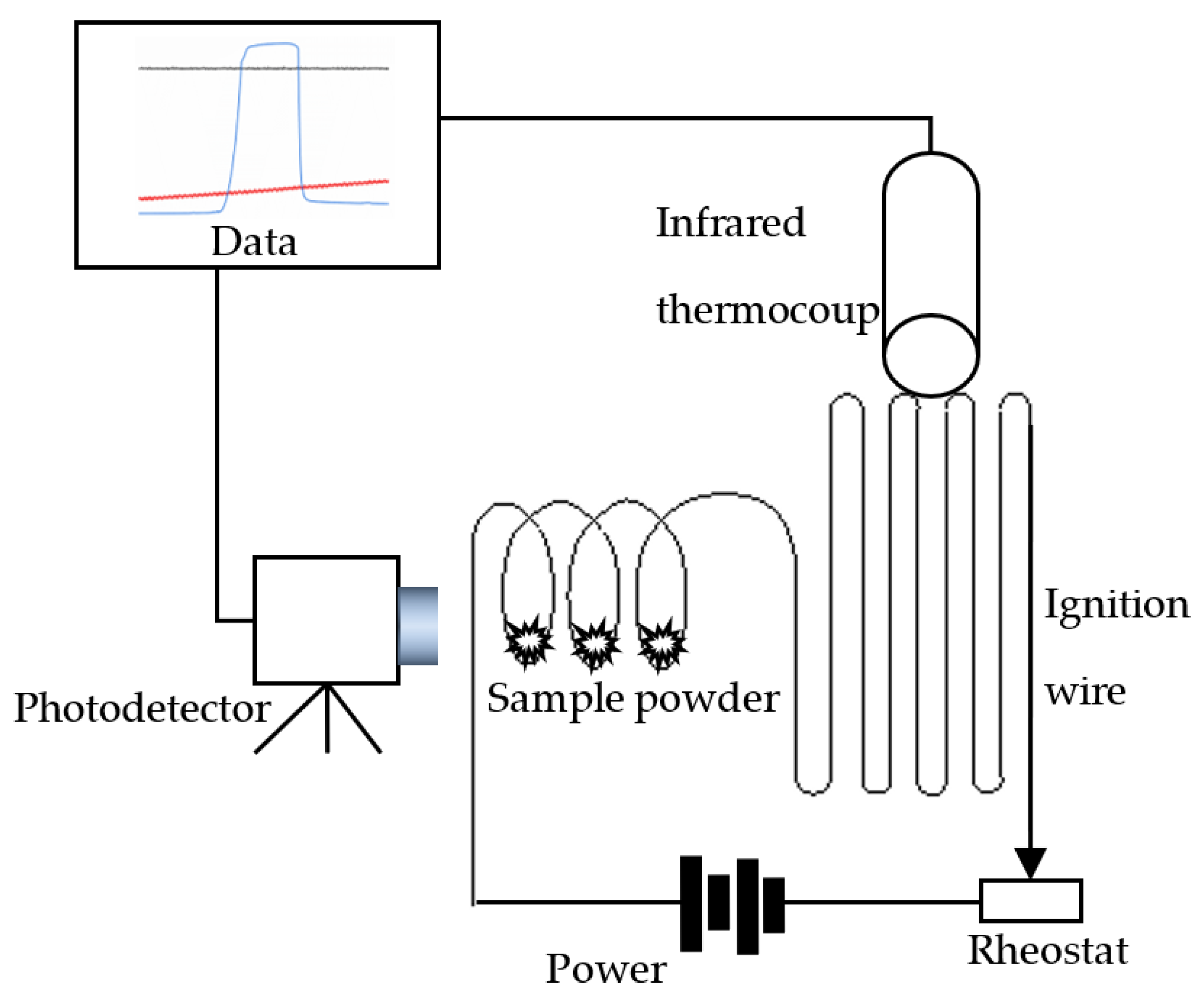
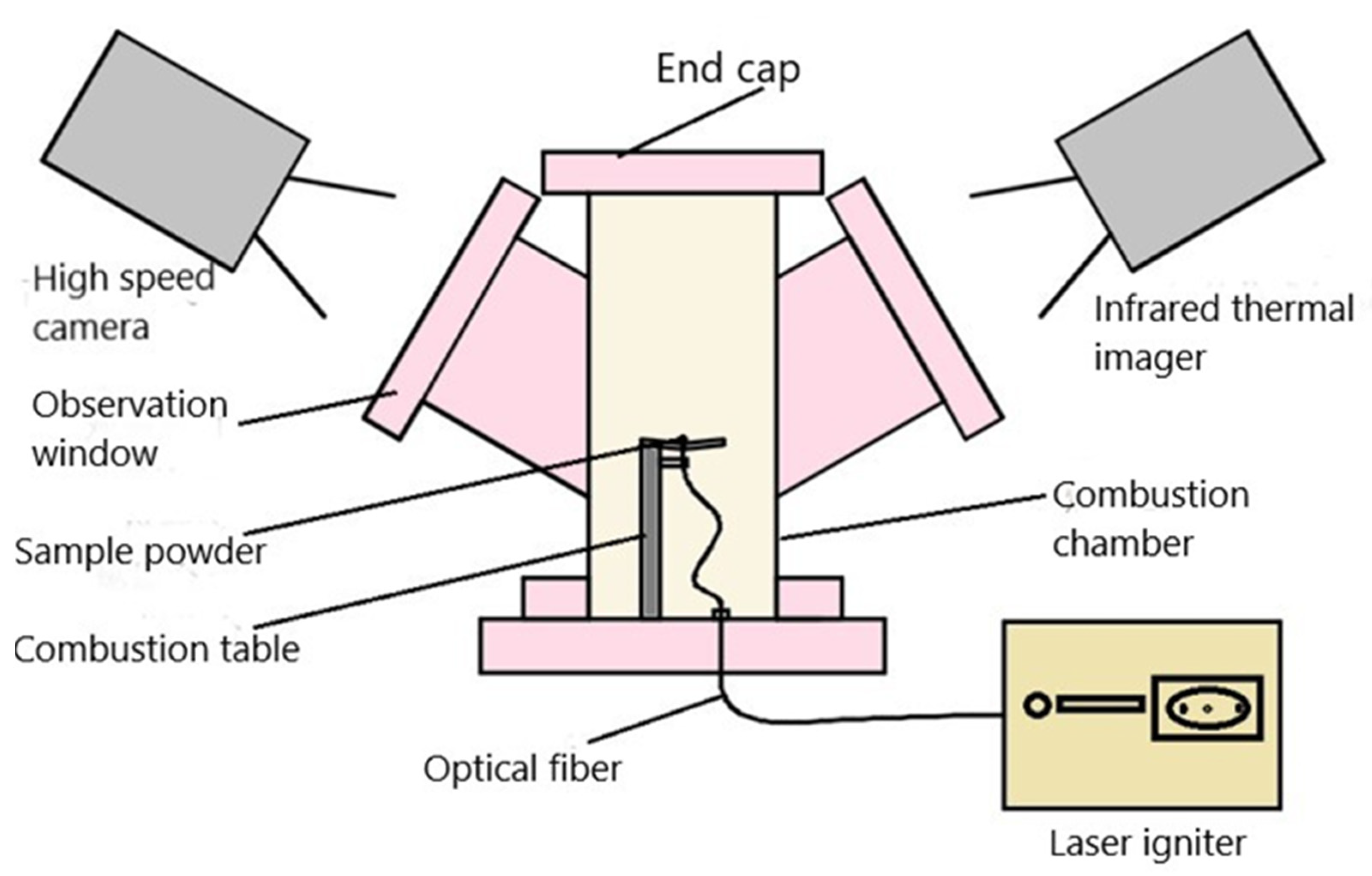

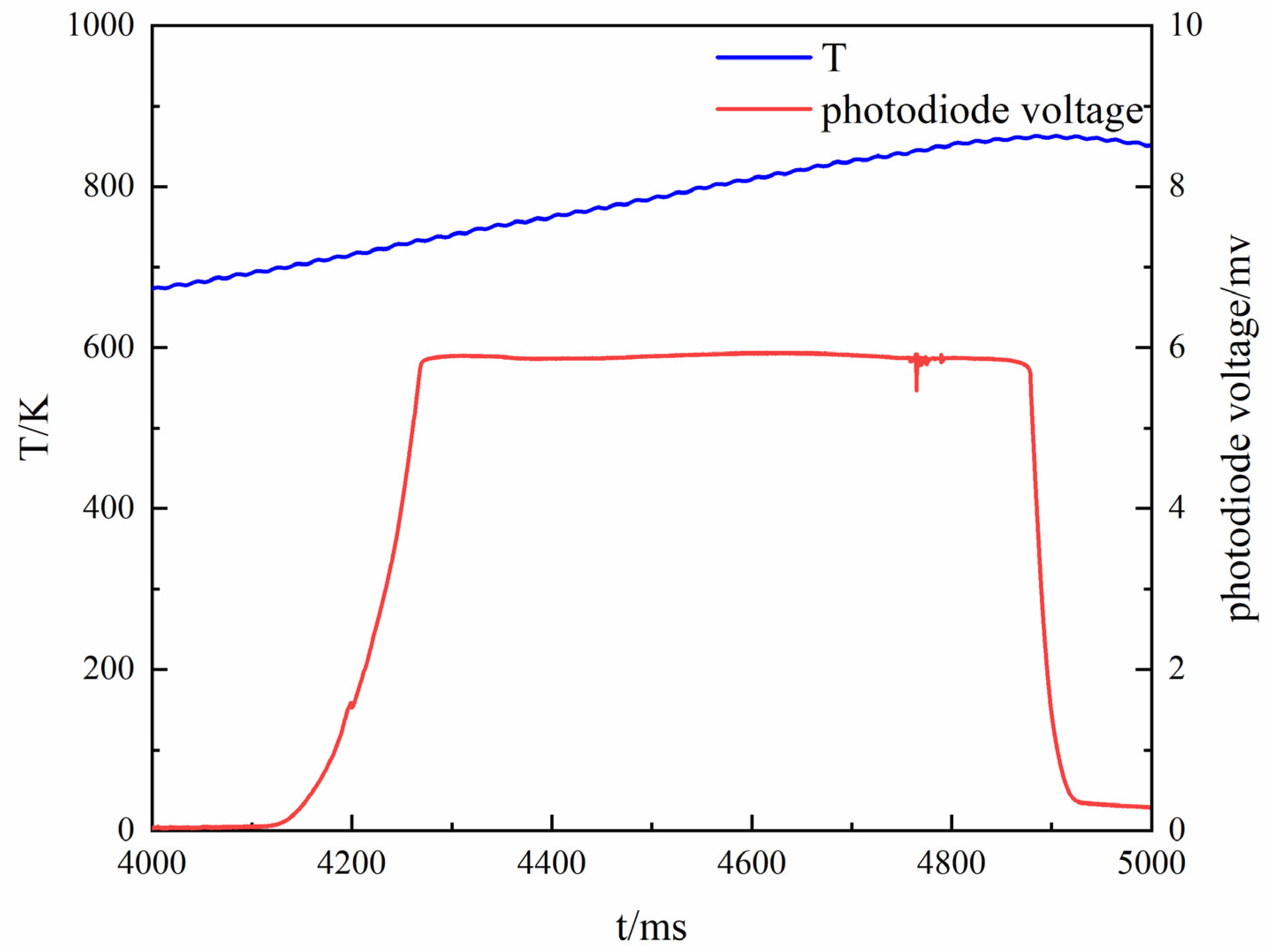
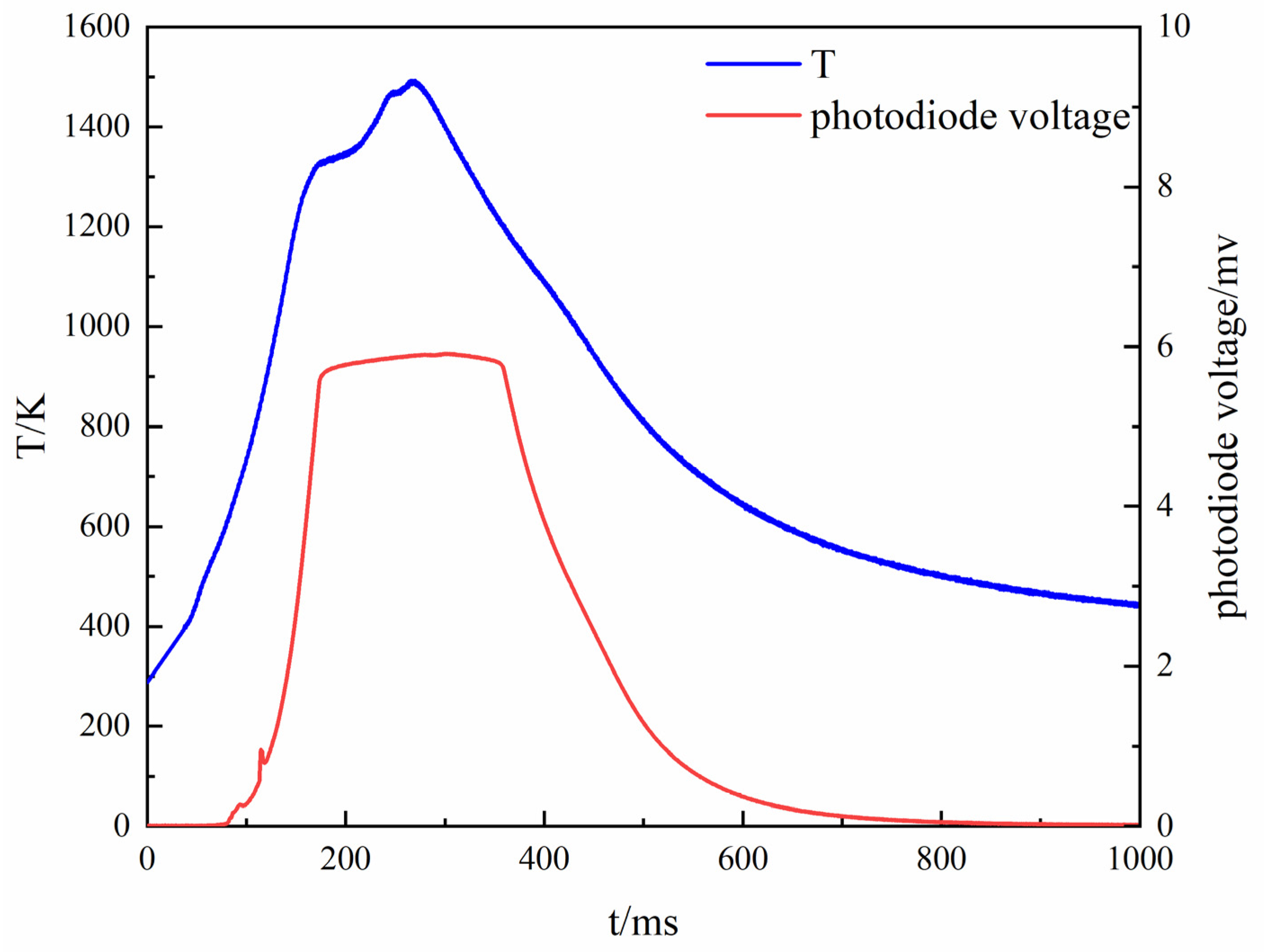
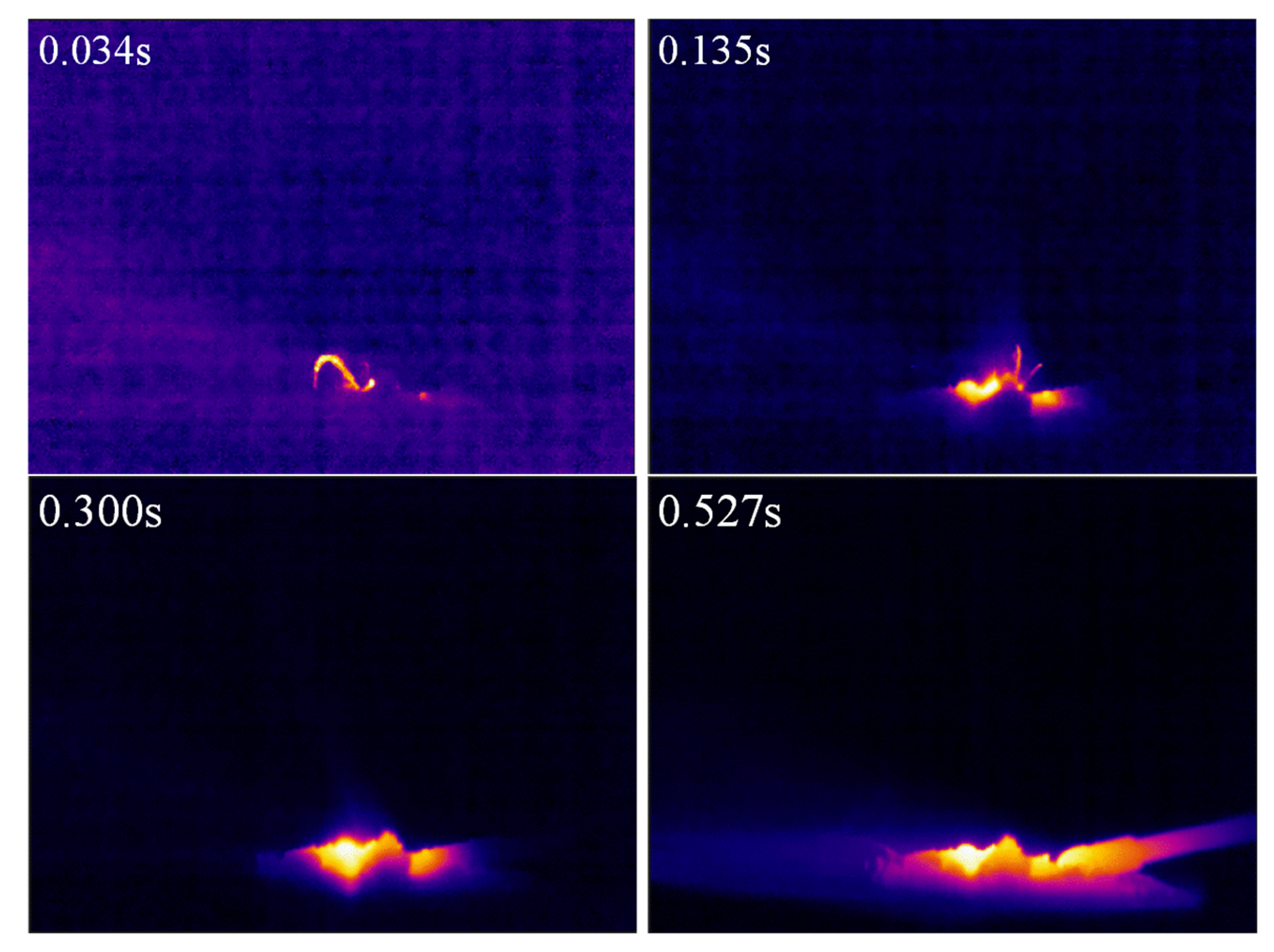
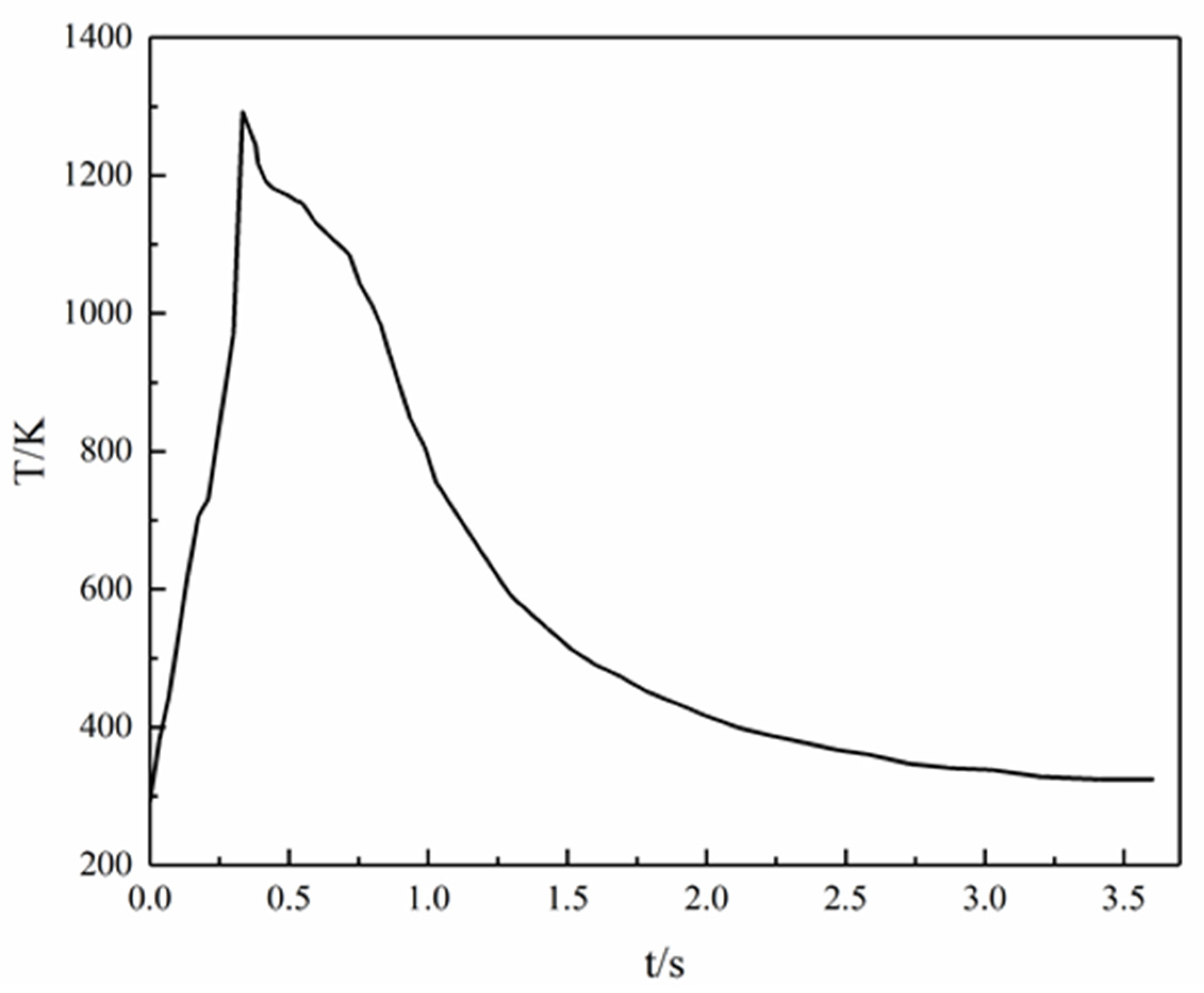
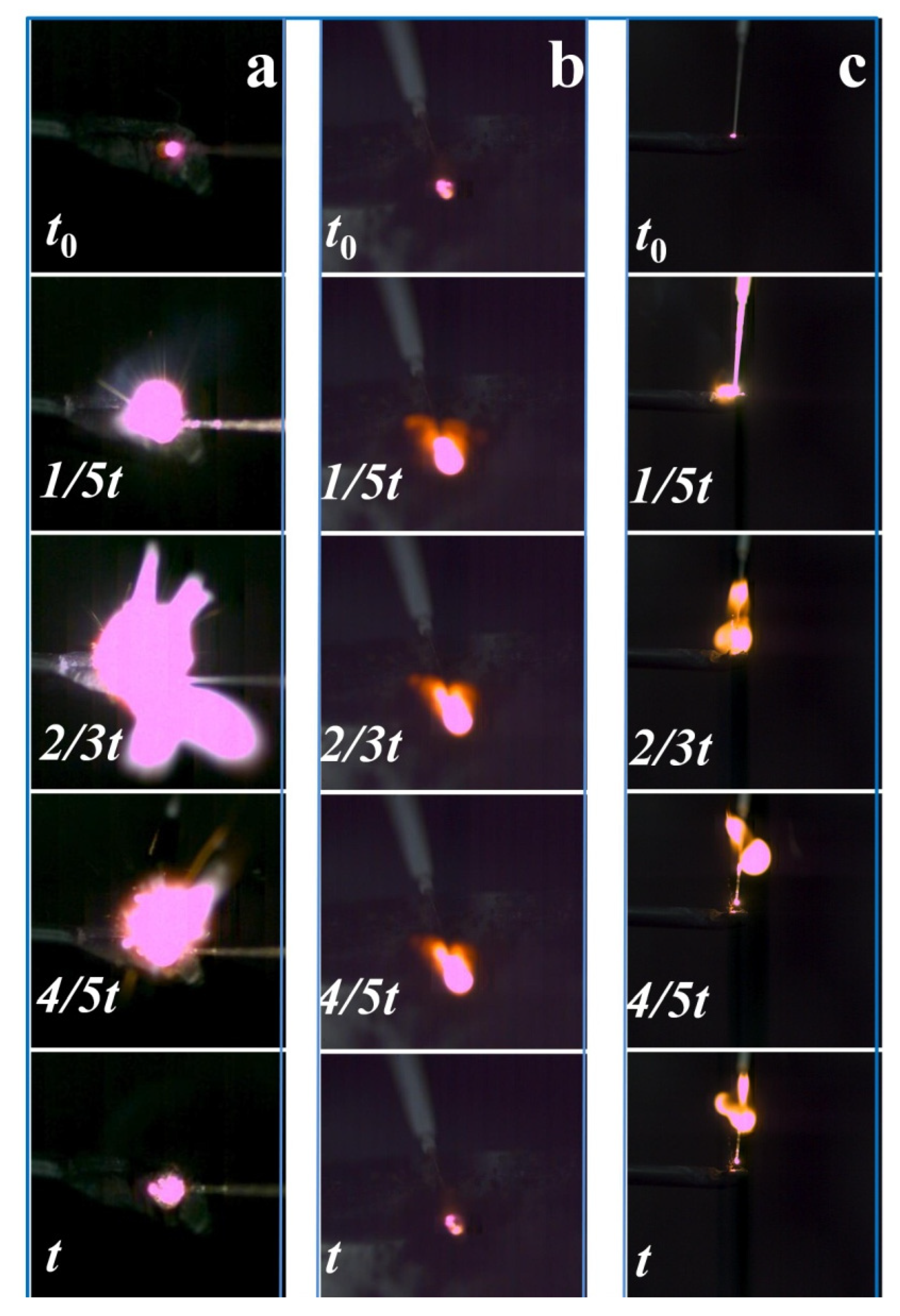
| t(s) | 0 | 0.034 | 0.068 | 0.135 | 0.174 | 0.209 | 0.300 | 0.333 | 0.527 |
|---|---|---|---|---|---|---|---|---|---|
| T(K) | 290 | 381 | 445 | 617 | 705 | 730 | 969 | 1293 | 1163 |
| Sample | Mg | B | MgB2 | |
|---|---|---|---|---|
| Parameter | ||||
| Burning time(s) | 0.41 | 0.86 | 0.53 | |
| Ignition temperature(K) | 719 | 2000 | 1293 | |
Publisher’s Note: MDPI stays neutral with regard to jurisdictional claims in published maps and institutional affiliations. |
© 2022 by the authors. Licensee MDPI, Basel, Switzerland. This article is an open access article distributed under the terms and conditions of the Creative Commons Attribution (CC BY) license (https://creativecommons.org/licenses/by/4.0/).
Share and Cite
Ma, Y.; Zhang, K.; Ma, S.; He, J.; Gai, X.; Zhang, X. Ignition and Combustion Characteristic of B·Mg Alloy Powders. Materials 2022, 15, 2717. https://doi.org/10.3390/ma15082717
Ma Y, Zhang K, Ma S, He J, Gai X, Zhang X. Ignition and Combustion Characteristic of B·Mg Alloy Powders. Materials. 2022; 15(8):2717. https://doi.org/10.3390/ma15082717
Chicago/Turabian StyleMa, Yusong, Kaichuang Zhang, Shizhou Ma, Jinyan He, Xiqiang Gai, and Xinggao Zhang. 2022. "Ignition and Combustion Characteristic of B·Mg Alloy Powders" Materials 15, no. 8: 2717. https://doi.org/10.3390/ma15082717
APA StyleMa, Y., Zhang, K., Ma, S., He, J., Gai, X., & Zhang, X. (2022). Ignition and Combustion Characteristic of B·Mg Alloy Powders. Materials, 15(8), 2717. https://doi.org/10.3390/ma15082717





